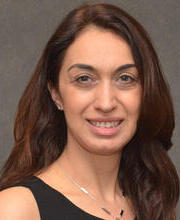Kristina Simonyan

Speech is one of the most unique features of human existence and communication. The significance and power of speech production cannot be overestimated as it defines who we are, our intentions, hopes, and beliefs. As a result, the neural mechanisms of voice, speech, and language control have been a topic of intense investigations for centuries. However, with the major focus on perceptual and cognitive aspects of speech and language processing, little attention has been given to the motocortical control of speech production. This is due, in part, to the continuous major technical challenges in this field associated with the absence of animal models of real-life speaking and a limited range of invasive studies that can be performed in humans to assess the neural bases of this complex behavior.
In the Simonyan Lab, we are focused on understanding the structural and functional organization of the speech motor cortex and its large-scale neural network that spans from brainstem to higher-order cortical regions. We apply a variety of neuroimaging methodologies to map brain activity and connectivity in healthy individuals and supplement our empirical data with computational approaches for the development of a large-scale neural population model of simulated speech production.
Investigations of the neural bases of speech production are important not only for understanding the basic principles of normal speech but also have a high clinical relevance. Speech-related disability is associated with such neurological movement disorders as laryngeal dystonia, Parkinson's disease, and essential tremor. One of our major research directions is to identify the causative pathophysiology of laryngeal dsytonia (also known as spasmodic dysphona), which selectively affects the production of speech but not other vocalizations, such as singing, laughing, or crying. Our studies are geared toward imaging genetics of laryngeal dystonia and the development of novel treatment options for these patients. In addition, we work on identifying the neural biomarkers for the disorder objective diagnosis and prediction of risk by combining brain imaging and machine learning analytic tools. Within the broader context of movement disorders, we are investigating the shared and disorder-specific characteristics of brain organization across different forms of dystonia affecting highly skilled motor control during writing, singing, and playing a musical instrument, as well as in comparison with other co-morbidities, essential tremor and Parkinson's disease.
We aim to develop a better understanding of normal and diseased states of the central nervous system during the execution of complex motor commands, which will ultimately help develop new diagnostic and treatment opportunities for patients with movement disorders.
Contact Information
Dystonia and Speech Motor Control Laboratory
243 Charles Street, Suite 421
Boston, MA 02114
